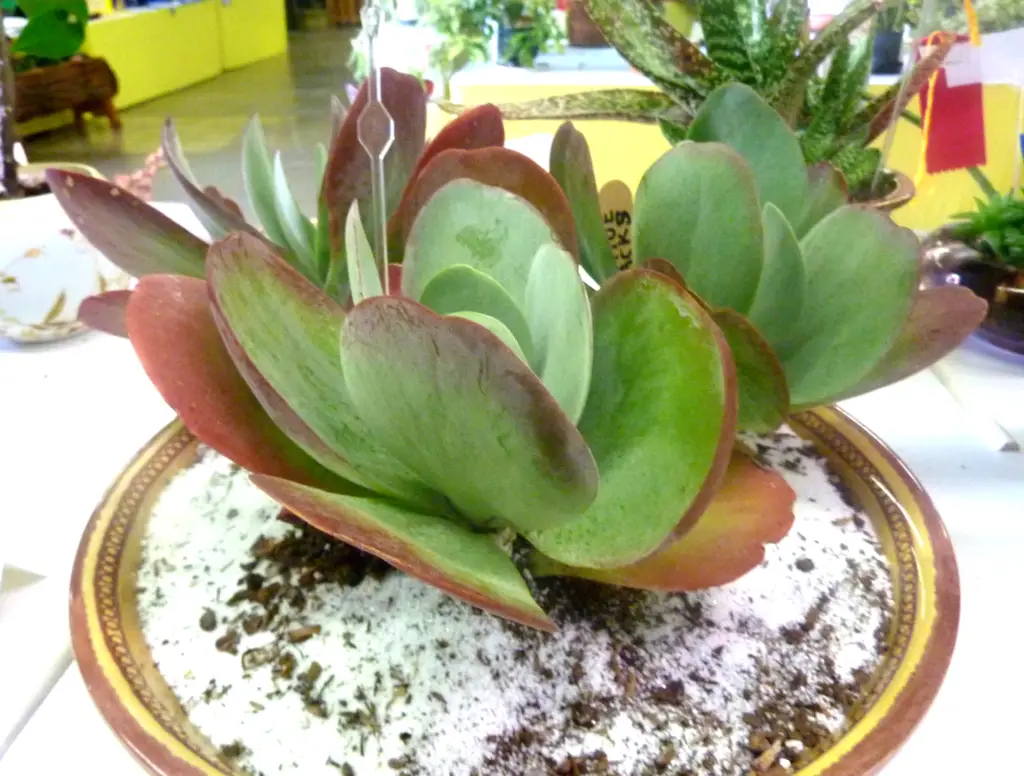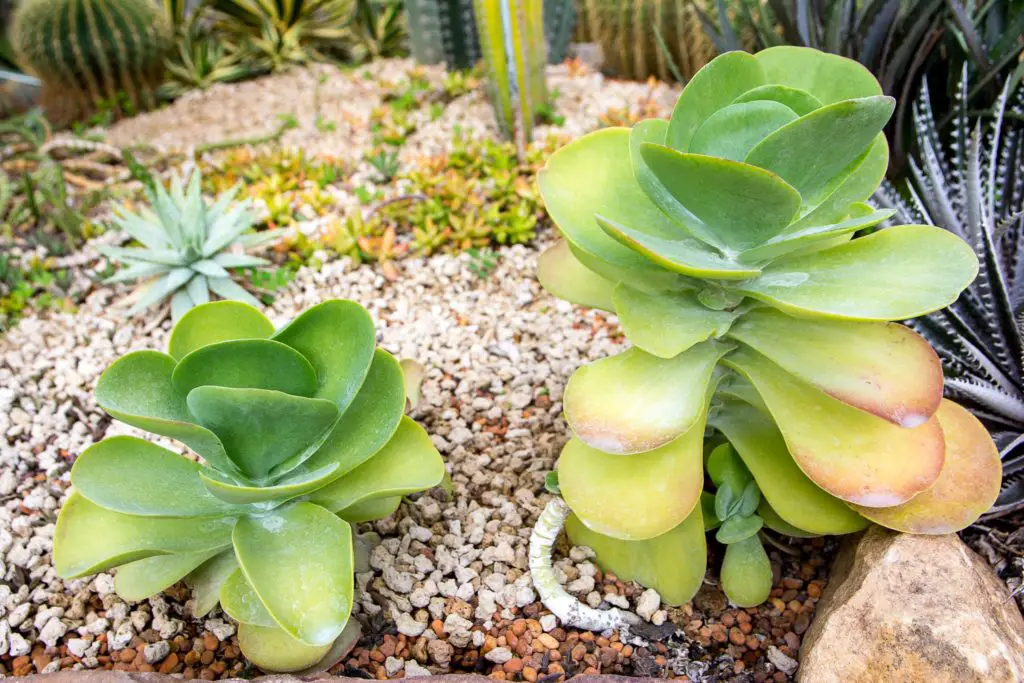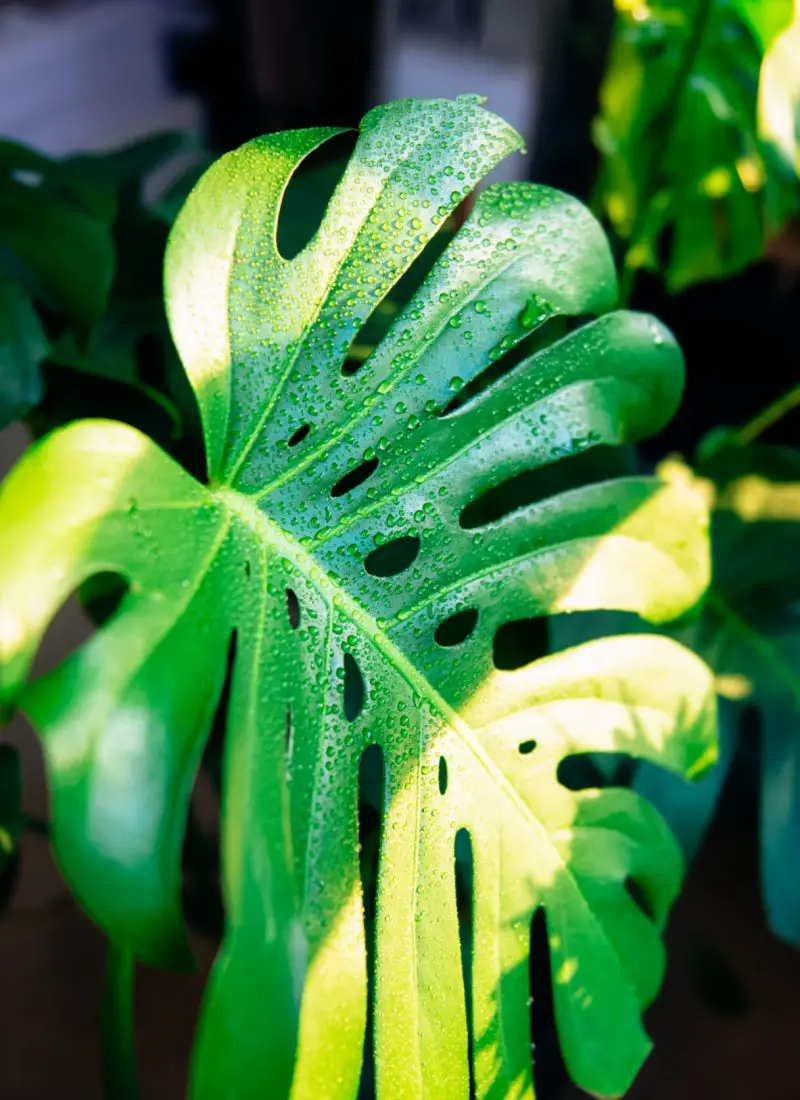
The Paddle plant, also known as Flapjack/Pancake plant, is a beginner-friendly, low-maintenance succulent. Because they are so low-maintenance, often you may not see the damage till the plant is really sick. So, what caused it? And how do you save your paddle plant?
As a whole, flowering or overwatering may cause a Paddle plant to die. The plant is monocarpic (Like Hens & Chicks), meaning it will shift all its energy into producing flowers before eventually dying (a swan song). But if there is no flower stalk, the plant is likely suffering from root rot and fungal problems due to improper care.
Below, I elaborate more on this phenomenon, other causes of a dying Paddle plant, along with the solutions to save it:
(As an Amazon Associate, I earn from qualifying purchases.)
Table of contents
What is Wrong with My Paddle/Flapjack Plant?
As mentioned in the introduction, there could be two main reasons why your Paddle plant may not be looking its full best:

1. It is blooming, signifying the end of its life cycle.
Paddle plants take about 3-4 years to mature before flowering. A tall, vertical flower stalk will emerge from the center of the plant, where small white-ish yellow flowers will develop. The rest of the main plant will eventually wither and die because it’s pushing all of its remaining energy into growing the flowers.
Even if you cut the flowering stalk as soon as you see it, you cannot delay the inevitable. The Paddle plant will keep trying to push out flowers, so there’s no way to stop the plant from dying. But the good news is it will leave behind a few offsets or pups in its place. You can propagate these into their own pots or let them take over where the parent plant was. At this point, feel free to cut off the flowering stalk or let it shrivel up over time.

2. It is suffering from damages caused by improper care.
If you don’t see any flowering stalk growing or your Paddle plant is too young, it’s probably struggling from one or more of the following:
- Overwatering
- Inadequate drainage
- Overfertilizing
- Underwatering
- Lack of sunlight
- High humidity
- Freezing temperatures
It’s worth noting that overwatering, inadequate drainage, and overfertilizing are often why Paddle plants tend to die. But that isn’t to say the rest of the causes wouldn’t contribute to the plant’s death – it’s just less likely to be the primary one.
How Can I Save My Overwatered Paddle Plant (Kalanchoe Luciae)?

Overwatering is the most common reason most plants die, especially succulents like Paddle plants. I should know … I have accidentally un-alived a few plants before (by accident).
Kalanchoe Luciae are native to arid environments and don’t require a lot of water to thrive. When you overwater them, their roots will rot, preventing the plant from taking up the water and nutrients they need to survive.
Here are the signs of an overwatered Paddle plant:
- Drooping, yellow leaves that fall off easily.
- Mushy, black stem.
- Dried, brown leaves despite the soil being wet.
- Foul smell coming from the soil.
Usually, if you’re observing all of the above, you may be too late because the root rot may have spread too much by then. The only way to save a part of the plant is to propagate any healthy leaves or offsets as quickly as possible.

But if you’re in the early yellow leaves stages, you’ll have to act fast to save your plant. Here’s what you need to do:
- Carefully remove the plant from its pot.
- Observe whether the roots are healthy white or mushy brown/black.
- Trim the rotten roots off with a sterilized, sharp cutting tool.
- Remove any damaged or yellow leaves.
- Repot the plant into a dry, loose potting mix in a new similar-sized pot.
- Water the plant very lightly and monitor its recovery.
Keep the plant somewhere dry and warm with enough airflow and bright, indirect sunlight. Hold off on fertilizing for a bit and water it ONLY when the soil is completely dried out. With a bit of patience, your Paddle plant will come back to life slowly.
I highly recommend using a moisture meter to check whether the soil has dried out entirely. It’s convenient because you can push the meter deep into the potting mix without getting your finger dirty. You can even do the same to all your plants in quick successions! Most of my plants, including the succulents, have been happier with me since I got their watering right using just this tool. I personally use this moisture meter from Amazon, and it hasn’t failed me once yet. As of writing, it has 4.4 stars with 28,642 ratings!
It’s worth noting that lack of drainage in the soil mix or pot can also contribute to overwatering problems. Paddle plants are not fussy and will happily grow in standard cacti & succulent mix. As for the pot, ensure it has drain holes and is the appropriate size to accommodate the plant’s rootball. You can read this drainage holes article here to understand why they are crucial for all plants, including succulents.
Overfertilizing may also show similar symptoms to an overwatered Paddle plant, minus the waterlogged soil. This is because too many harsh chemicals will burn and kill the roots. The plant won’t have enough healthy roots to absorb moisture and spread it to the rest of the plants. On top of leaf and stem damage, the Paddle plant will also be susceptible to pests & disease problems. The best way to counteract this is to flush the soil thoroughly with water to remove all the salt and leave the plant to dry for 1-2 weeks.
Why Are My Paddle/Pancake Plant’s Leaves Drooping?

As mentioned in the previous section, dropping leaves on your Pancake/Paddle plant may point to overwatering problems. However, they can also mean a different underlying condition. But the most typical ones are the following:
- Underwatering.
A severely underwatered Paddle plant usually has sad, shriveled, drooping leaves. While this does not often happen, the most forgetful plant owners may push this plant’s limit. A quick soil check will determine whether you’ve recently watered the plant. If not, a thorough glug of water will perk the plant back up.
- Lack of sunlight.
Paddle plants will thrive outdoors. So when it doesn’t get as much sunlight indoors, it starts to literally sulk. Their color may fade slowly from the inadequate light, but they won’t die immediately. Your best chance of fixing the plant back up is to move it somewhere more sunny, being careful to shade it from the afternoon glare. But do this slowly over a week, inching it closer to the bright area a day at a time so it’ll get used to its new surroundings.
- High Humidity.
This is another unlikely cause of the drooping leaves unless you live somewhere humid or place your Paddle plant next to the humidifier. The plant will happily thrive in the dry conditions of your home anyway. So best keep it away from your bathroom and kitchen where the humidity levels are higher than the rest of the rooms.
- Freezing Temperatures.
If you regularly move your Paddle plant outdoors or accidentally expose it to cold draft indoors, the cool temperatures may cause drooping leaves. The leaves will get cold damage once it gets below 30°F, though the plant can technically survive down to the mid-20°F. The best thing to do is bring it indoors where it’s warm, as soon as the frost is predicted.
Often, drooping leaves are easily fixable and not the end of the world for the Paddle plant. But don’t ignore it for too long because you’ll leave the plant vulnerable to pathogens and hungry insects.
Frequently Asked Questions about Paddle Plants

Flapjack Paddle plants need 6-8 hours of bright, indirect sunlight daily. They can also tolerate full sun but require shade from the afternoon glare to prevent leaf scorching. If they don’t receive enough light, they become etiolated or grow leggy in an attempt to reach for more of the nearest source of light.
Plain green leaves may indicate not enough sunlight for a Flapjack Paddle plant. Red tinges on the leaves often develop in winter when the plant has received adequate sun. However, this doesn’t necessarily mean it is suffering. Unless its leaves are stretching towards the light, then it is doing just fine as is.
Once every 1-2 weeks after the soil has completely dried out is a good standard watering schedule for a Flapjack Paddle plant. In winter, it’s best to water as little as possible at least once a month. However, this frequency may vary depending on the climate and humidity in your area. So always use a moisture meter before watering the plant to ensure it is dry.
Feed Flapjack Paddle plants once every 3 months with an all-purpose fertilizer from spring to summer. Avoid fertilizing them in fall or winter during their dormancy. The plant will benefit from a nutrient boost every now and then if it is potted. But in-ground Paddle plants usually don’t need any fertilizing.
There are two ways to propagate a Flapjack Paddle plant:
1. Place each offset into its own pot to develop, provided they’re at least 1/3 of the mother plant’s size.
2. Pluck leaves from the plant and let them dry for a few days before planting in moist soil.
It’s usually much easier to grow the offsets than propagate the plant from leaf cuttings. But both do work; it’s just a matter of personal preference. You can learn more about that in
this ultimate propagation article.
Scales, mealybugs, powdery mildew, and root rot commonly cause damage to Flapjack Paddle plants. However, they tend to appear after the plant has weakened considerably from improper care. But they are not impossible to get rid of. You can find all you need to know in this houseplant pests & disease article to remove them easily.
Flapjack Paddle plants are toxic upon ingestion and should be kept away from pets and children. Where possible, lock the plants in a designated room or put them in hard-to-reach places.
The paddle-like leaves are stacked onto each other like pancakes to form a rose-like shape. This gives them the common name Flapjack plant, Pancake plant, or Paddle plant. They are also known as Red Pancakes, Dessert Cabbage, and Dog Tongue.
Flapjack Paddle plants are the common name for Kalanchoe Luciae and Kalanchoe Thyrsiflora, but the former is more widely available. There’s a slight leaf size difference between them, where the Kalanchoe Thyrsiflora has smaller, cupped leaves. But the most distinctive way to tell them apart is their flowers. Kalanchoe Luciae grows white-ish yellow flowers with no scent. But Kalanchoe Thyrsiflora develops vibrant yellow flowers with a strong fragrance.
Final Words
All in all, Paddle plants may tolerate indoor conditions but are certainly not invincible. Just try not to overwater and give them the best care. If they start flowering, let their pups take over as the new mother plant. Happy planting!
References:
https://www.reddit.com/r/succulents/comments/8vegm6/paddle_plant_problems/
https://www.houzz.com/discussions/1784328/i-don-t-think-this-is-normal-for-a-kalanchoe-luciae
https://hort.extension.wisc.edu/articles/flapjacks-kalanchoe-spp/






